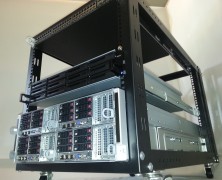Where does your data live? For most organizations, data locality is as simple as making sure that the data is close to where it is being used. For some, data locality must also factor in geographical location and/or legal description. Regardless of the scope, data locality is a real world concern to an increasing number of organizations. If this is the first time you are encountering the term data locality you are likely asking yourself – quite reasonably – “do I care?” and “should I care?” For a lot of smaller organizations that don’t use public cloud computing or storage, the answer is likely no. Smaller organizations using on-premises IT likely aren’t using storage at scale or doing anything particularly fancy. By default, the storage small IT shops use lives with the workload that uses it. So far so good… except the number of organizations that fall into this category is shrinking rapidly. It is increasingly hard to find someone not using public cloud computing to some extent. Individuals as well as organizations use it for everything from hosted email to Dropbox-like storage to line-of-business applications and more. For the individual, cost and convenience are usually the only considerations. Things get murkier for organizations. The murky legal stuff Whether you run a business, government department, not-for-profit, or other type of organization, at some point you take in customer data. This data can be as simple as name, phone number, and address. It could also be confidential information shared between business partners, credit card information, or other sensitive data. Most organizations in most jurisdictions have a legal duty of care towards customers that requires their data be protected. Some jurisdictions are laxer than others, and some are more stringent with their requirements based on the...

